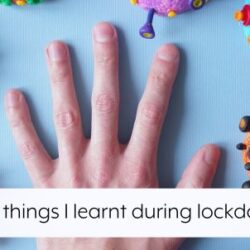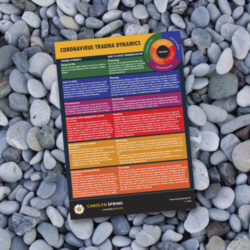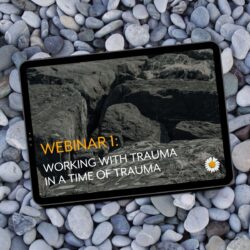
‘I can’t concentrate. I can’t focus. I can’t read. I can’t remember. My brain has become mush.’
So said my friend to me, but so could I have said to her. The last year during lockdown has seen some of the sharpest people on the planet (my friend included) struggling at times to read and retain single sentences.
Struggling with focus, with concentration – for many of us it feels as if aliens appeared in the night and removed 90% of our brain cells. We feel dull and foggy and confused and stupid – a kind of cognitive deskilling, where everything takes twice the effort.
‘It’s not just the gin?’ my friend asks, half doubtfully and half guiltily. It could partly be the gin, I think, but I don’t say it.
Why has lockdown caused such brain fog for so many of us? Why the deficits in attention, memory, time-processing and processing? Is it something in the air? Is it entirely imagined? Is it just implicit laziness made manifest? Is it the gin? Or does it, in fact, make sense?
When we talk about losing focus and attention, we need to understand why we have focus and attention in the first place. What’s the point? What causes us to focus and attend to things, and why might our brains stop doing this?
The answer lies at least partially in our evolution as Homo Sapiens to survive threat, which requires that we pay attention to our surroundings. This is the most primal function of our brain’s attention system: to direct our senses towards changes in our environment that might signal threat. Did the leaves just rustle? Was that the crunch of a twig? Can I hear paw-steps or foot-steps, or is that the near-silent slither of a snake? This is what we have evolved to do: pay attention so that primarily we are alert to threat.
But our attention wavers. That new picture you bought? At first it was so fresh and vital and interesting. It brought a warm glow every time you looked at it. And then within a few days, ever so subtly, it became less vibrant. Within a few weeks you were noticing the thunder bugs but not the picture itself … because our brains give us a little dopamine hit whenever there’s novelty. We’re rewarded for paying attention to the new, and over time your brain assessed the picture as unworthy of attention – because it’s not threatening. It stopped being worth noticing, with ever-diminishing dollops of dopamine, and it became … well … part of the furniture. It became boring, and then eventually you stopped noticing that it’s even there. You only notice it when it’s gone.
So our brains are geared towards novelty and filter out the familiar. And after the initial upheaval of expected near-apocalypse, the last year has become an exercise in familiarity. Of every day being the same. Of every part of every day being the same. Not going out, not going to work, not going home (because we haven’t been anywhere to return home from). Just the same old, same old – which to our threat-based attention circuits means ‘sleep mode’. Mental mundanity meets lockdown lifelessness.
So our brains attend to threat, and drop attentional focus when everything remains dully familiar. But our brains also wake up to people, and that’s not been happening much either. There is nothing more stimulating to a human being than another human being. We are wired for relationship. We come alive in the presence of others – especially when, for double effect, their presence is novel: absence makes the heart grow fonder but new presence makes the brain focus longer. Our brains activate at the sight and sound, the touch and feel, the smell and sensation, of other people. And that has happened relatively rarely over the last year. There’s been precious little booting up of our social engagement system. Our brains have stayed in relational ‘sleep mode’.
During the first lockdown I spent 69 days straight without properly being in the presence – the immanent, intimate presence – of another human being. It was a strange experience, with undertones of traumatic loneliness from the past, but it had too its own unique fingerprint: a sense that I’d never experienced before, of people fading away, like some Back to the Future erasure scene. I still cannot properly put it into words. This time around it has been significantly mitigated by weekly face-to-face therapy – yes, I am one of the ultra-lucky ones. But there still remains for me, as I’m sure there is for so many, the sense of a drifting away from relational presence. A sense that people are not quite as real as they used to be.
Our brains have dialled down again in response to this relational vacuum. We are whirring more slowly. My hunch is that it will take a little while to dial back up again. This is what so many people are talking about – a reticence, an anxiety, almost a loss of confidence about going ‘back to normal’ and the busy, hyper-engaged life that most of us used to live. Perhaps our relational brains will need a little while to warm up out of hibernation first, and then it will feel as familiar as it once did. Or perhaps there has been an atrophying of our relational senses, and an intolerance for human overload? Only time will tell.
The third reason for lockdown lethargy is the trauma-vapours we’ve all been breathing in during this time of collective trauma. We’ve been shrouded by a constant, insidious life-threat: the virus itself, plus its secondary impacts – financial insecurity, loss of liberty, reduced access to healthcare, loneliness, and savage uncertainty.
We may be angry at these losses, we may have been stoic in the face of them, we may have disregarded them, but all of us have been affected by them. Our brains, collectively, have clocked the shift in wind direction, the scent on the air, the rustle in the leaves. We have all been put on survival-alert. Our physiological threat response has provoked the sympathetic nervous system amber zone response of fight-and-flight (if we’re lucky) or the worn-out, resigned, defeated red zone response of freeze (often when we have a trauma history). Both have resulted in a disturbance of cortisol, the energy hormone. Trauma is tiring. Constantly readying ourselves to respond to threat is exhausting. Lockdown lethargy is a very normal response when the threat is chronic, as it has been … and still is.
‘So my brain fog – it’s not just the gin?’ my friend asks me again, after I’ve explained this, with a glint in her eyes.
No, it’s not just the gin, I agree. There are very real reasons, based in our neurobiology, in our evolution, in the way we are wired from the womb, to explain why so many of us have felt heavy-limbed, lumpy, dull, fuggy, and drained. It’s so easy to blame ourselves. Those of us with enduring shame will oh so easily blame ourselves: if only we were less lazy, more determined, less pathetic, more organised, less helpless, more focused, less tired, more enthused. But our fatigue and depression, our lack of energy and focus and concentration and motivation – all of this is a normal response to chronic, low-level threat. Lockdown lethargy is an artefact of this time of trauma, not of our inherent patheticness and uselessness. It’s definitely not just the gin.



2 Comments
From the very beginning we were created to be in relationship. Forced and denied this enabling gift is crippling to our senses, it distorts our reality.
Thank you! This explains the why behind so much of what I have experienced during the Covid-19 lockdown.